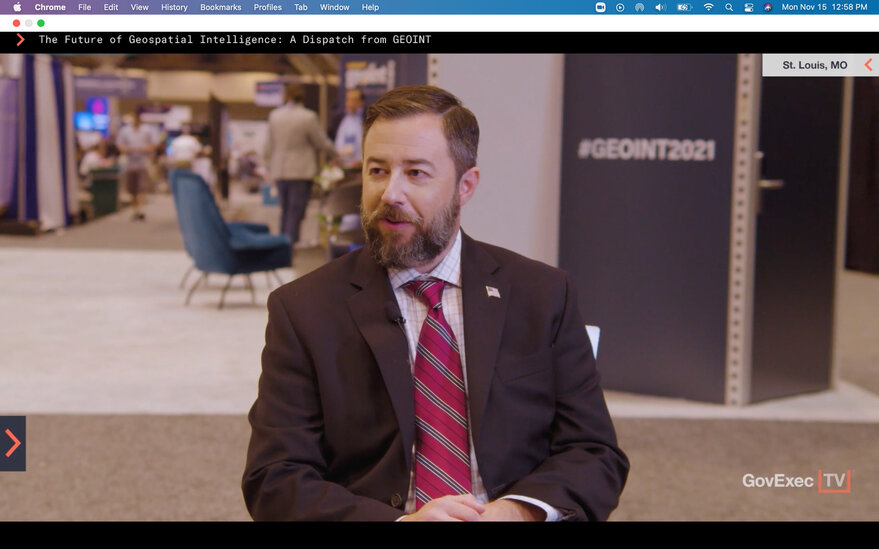SAN FRANCISCO – The National Geospatial-Intelligence Agency is eager to tap into unclassified commercial data services as part of its ongoing effort to track activity around world. Rather than fusing commercial data with government information or analysis to create new classified data products and services, though, the NGA is interested in keeping datasets unclassified.
“So much data is coming in the unclassified environment that it would be foolish of us to continue to lift that data into classified networks to exploit it,” Dave Gauthier, director of NGA’s Commercial and Business Operations Group, said Nov. 15 during “The Future of Geospatial Intelligence,” a GovExec TV epidode. “We’re trying to find out how can we leave the data in that unclassified domain, and then exploit it there organically. Or have the companies do the exploitation in their environments and provide us the analytic services, which are the fruits of that exploitation.”
There is a major shift underway in how U.S. intelligence agencies interact with commercial satellite imagery and data providers. The agency is keeping a close watch on the proliferation of commercial Earth-observation satellites as it considers the best way to manage the data deluge.
“We’ve realized that the bottleneck will be ingesting raw data,” Gauthier said. “We just can’t do it the way we used to, by taking raw data and exploiting that with human power.”
Gauthier sees promise in what he calls “analyst ready” information feeds. The idea is to tap into a set of daily database inputs and integrate them into “the workflow of someone who’s performing a mission task and trying to create insights,” he said.
“We have to embrace having that data be converted into information services, analytic services, tailored products that are designed for use in our workflows,” Gauthier said. “My organization is very focused on putting out our needs for those analytic services to the industry and then discovering what their capabilities are, assessing those capabilities and then acquiring what we can for our customers.”
NGA also is considering how the proliferation of unclassified data impacts its workforce.
During the COVID-19 pandemic, geospatial intelligence analysts working with unclassified data were able to perform some of their work from home.
Going forward, NGA is considering augmenting its contractor workforce with people who obtain public-trust clearances, like people who work in the Interior Department or General Services Agency, rather than secret and top secret clearance, Chris Rasmussen, NGA lead for open-source analysis, during the GovExec TV episode.
“We can onboard contractors incredibly quickly,” Rasmussen said. People who obtain public-trust clearances would not get access to a secure facility, nor would they need it, he added.
